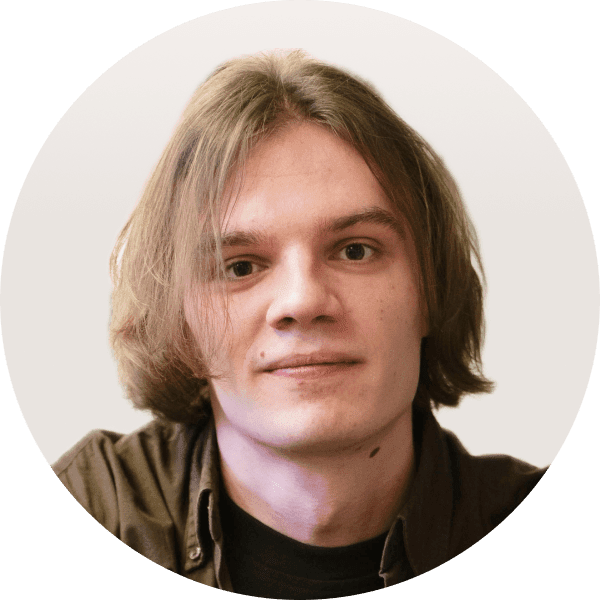When you create a marketplace platform, building a minimum viable product first is a safe play that allows you to save costs, time and test the idea. In the meantime, it provides valuable feedback on the product and its primary features.
Hence, in this article, we will discuss how to build a marketplace MVP through several simple steps. We will reveal interesting insights and points you should always have a keen eye on, along with actual steps to take when building an MVP for online marketplace.
Benefits of building an online marketplace MVP
An MVP is a version of your custom marketplace that contains only the most basic features. Once the MVP is created, you will be able to understand what should be modified/removed/added on the website. It can be done with the help of useful feedback from your early adopters.
This approach allows you to rapidly and viably build an MVP marketplace that can further be scaled and corrected.
Here’s how the MVP approach works in product development:

Basically, the minimum viable product is way more beneficial than you think. It has a vast range of advantages that will help you stabilize your marketplace and ensure stable growth. Such advantages are as follows:
- Market validation. Launching an MVP enables you to validate your marketplace idea and assess its market potential. By releasing a simplified version, you can gather user feedback, gauge engagement, and determine if your target audience sees value in your offering.
- Cost efficiency. Building an MVP is cost-effective compared to a full-featured marketplace. By prioritizing core features, you save on development costs and avoid investing in non-essential or undesired features.
- Time-to-market. An MVP launch speeds up your marketplace's entry into the market. By focusing on essential features, you shorten development time and quickly attract users. This early market entry helps establish a competitive advantage and provides valuable insights from user interactions.
- Risks mitigation. An MVP reduces risks in developing a full-fledged marketplace. By releasing a scaled-down version, you can test market demand and idea viability without significant upfront investment. This iterative approach enables you to identify and address challenges early on and make necessary pivots if required.
Core parts of an online marketplace MVP
As mentioned before, when you want to build an MVP marketplace, its functionality should be valuable to potential users. However, to ensure success, the marketplace has to be a viable platform for vendors as well. This means you must build features that will cover most of both platform sides’ needs. This includes providing the best user experience, easy navigation, and others.
Now, let’s take a look at the main features your online MVP marketplace should include.

Home page
The marketplace's initial page, even in its MVP version, requires several elements: a logo space, search bar, featured categories and products, testimonials, call-to-action (CTA) buttons, and footer links to important pages. It should offer a clear introduction to the platform, guiding users to its main features and categories, with space for banners showcasing special offers or discounts to attract newcomers.

Read also: Online Marketplace Design: Why UI/UX Matters
Account page of buyers and vendors
This feature is vital for suppliers, as clear and manageable store information is crucial for them. Buyers benefit from knowing basic store details, like marketplace functionality, fees, and privacy policies, enhancing their shopping experience with quick access to necessary information.
Product page
This feature allows buyers to learn details about the goods listed by sellers. It includes description, item information, technical specifications, customer reviews, and warranty. Product pages are the most viewed and visited pages on the website. Buyers decide whether to buy an item at this stage.
Registration page
A marketplace MVP's registration page must be clear, serving as the main entry point for users. It should feature a form for basic and detailed information, along with a checkbox for terms and conditions. Additionally, it should allow users to sign up via social media, Google, or Apple ID. Error handling for issues like invalid email addresses or weak passwords is essential.

Search option
Search is essential for a marketplace MVP, as it enables buyers to find the required item rapidly and smoothly just by entering a keyword in the field. Suppliers can use the search option to navigate through the website and find information on competitive goods. This way, they conduct a market and competitor analysis.

Messaging
This feature facilitates communication between parties regarding products or services, including discussions on cost, payment methods, and delivery. It can be implemented using various methods, such as integrating messengers, real-time calls, or embedding a chat into the platform as a pop-up.
Payment processing
It is vitally important for users to both choose the desired item and pay for it expeditiously. With the idea of implementing effortless payment, you can come up with various ideas. For example, it became extremely popular to implement Apple and Google Pay. Besides, it is always a perfect idea to provide your customers with multiple payment methods, e.g. PayPal, Stripe, and Square.
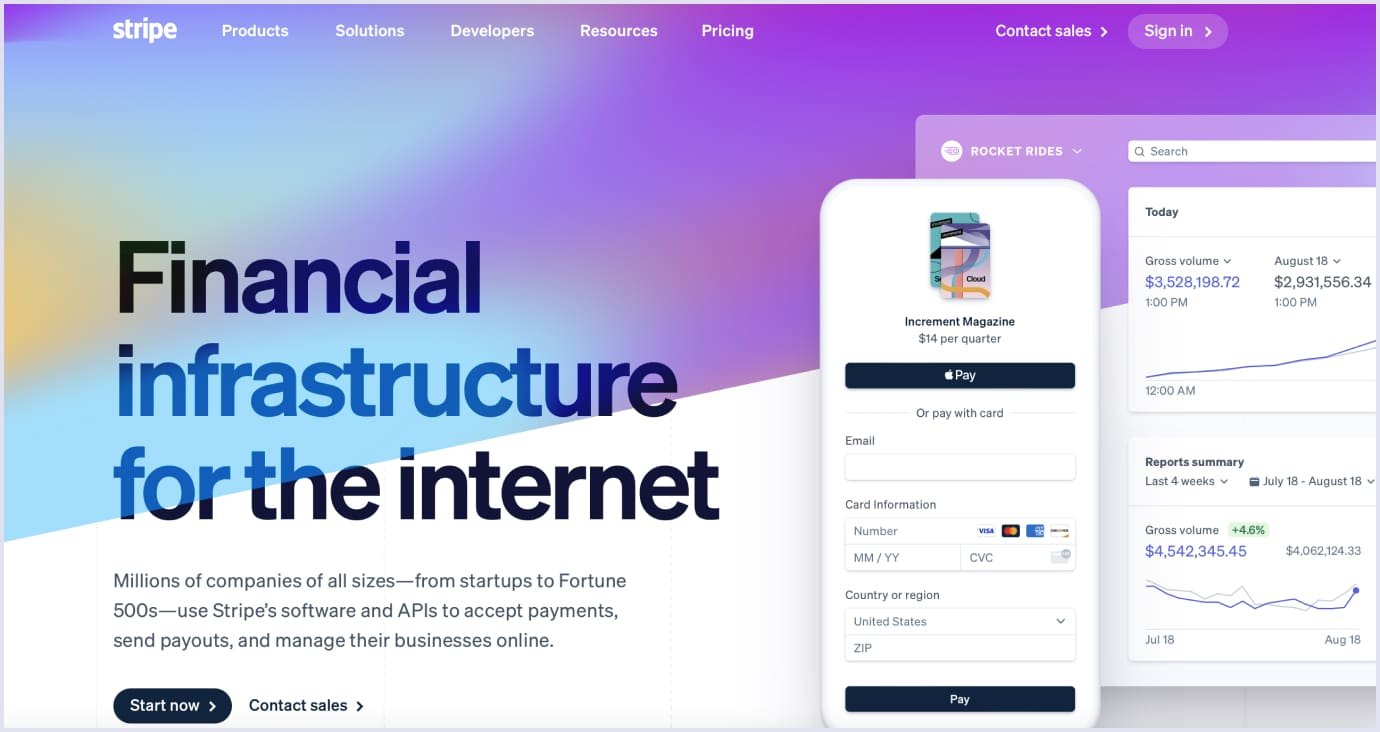
Reviews and ratings
Make your marketplace MVP reliable. With reviews and ratings, you can make buyers feel confident and trust you when buying goods. This will increase their likelihood of placing an order.
Notifications
This feature enhances the user experience for visitors and boosts traffic. They inform users about new messages, order requests, special deals, etc. It means that users always stay engaged with your brand.
Administration panel
It gives you (as an admin) an opportunity to monitor and manage all the seller-buyer interactions. It includes editing info about the platform users, items, and payments. Using this feature, you can take into account the users’ feedback and locally improve the marketplace workflow.

Related reading: How to Build a Multi-Vendor Marketplace Platform
Steps to build an online marketplace MVP
Although MVP seems simple to build, organizing the development in thoughtful steps is crucial. At Codica, we do just that.
Product discovery
To begin with, product discovery services play an enormous role in the initial phase of the marketplace development process. They have several major benefits.
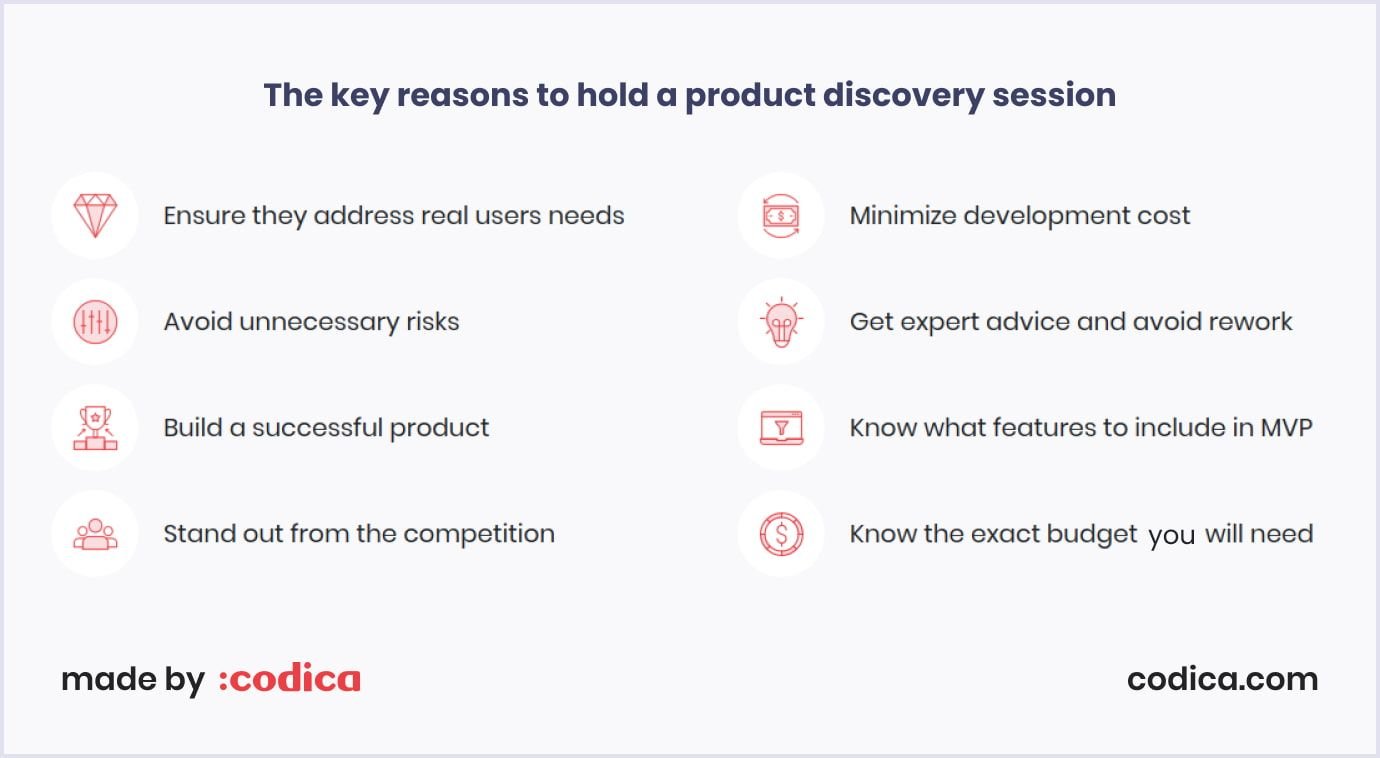
Performing product discovery, you can see the whole picture of your future marketplace. For instance, at Codica, we:
- Analyze the market and the potential competition to help you stand out.
- Provide detailed budget documentation, including prices per each feature and time estimates;
- Form a thorough project documentation including numerous aspects;
- Conduct user experience (UX) research and create working prototypes for your future marketplace.
Overall, our product discovery is a highly beneficial approach to ensuring the success of your future marketplace upon release.
Choose a business model
Selecting a business model for your marketplace depends on several factors, such as the type of products or services being offered, the target market, and the revenue goals of the platform.
Normally, there are several major ecommerce business models that marketplaces stick to. For example, the most popular are:
- B2C – business-to-customer model focuses on delivering goods to single users.
- C2C – consumer-to-consumer model allows marketplaces to engage in cooperation between individuals, providing them with the platform.
- B2B – business-to-business model allows marketplaces to target enterprise-level customers and sell goods in bulk instead of targeting individuals.
- P2P – peer-to-peer model is the most popular choice for marketplaces that connect people who offer services or own products with those willing to pay for them.
Knowing the types of business models is one side of the coin. Another thing to consider is which one is the most suitable for your future marketplace.

Defining the main features of your product
Your marketplace's minimum viable product shouldn’t include all the features you’d like to see in the final product. To prioritize features, choose the ones that deliver the most value to users while requiring the least effort to build.
You will need to gradually move from the core features of your marketplace to the ones that can be considered helpers. The latter are usually planned the last because they bring improvements, but the marketplace can operate without them.

Technologies to use
Once you have chosen the list of required features for your website, you can proceed to the technical implementation of your ideas. Here are our favorites for building marketplaces.
- Server-side tech stack. Backend or server-side technologies are tools that allow interaction with servers. In our experience, the best ones for handling server-side operations are Ruby, ElasticSearch, Redis, i18n gem, Ruby on Rails, MySQL, and Sidekiq.
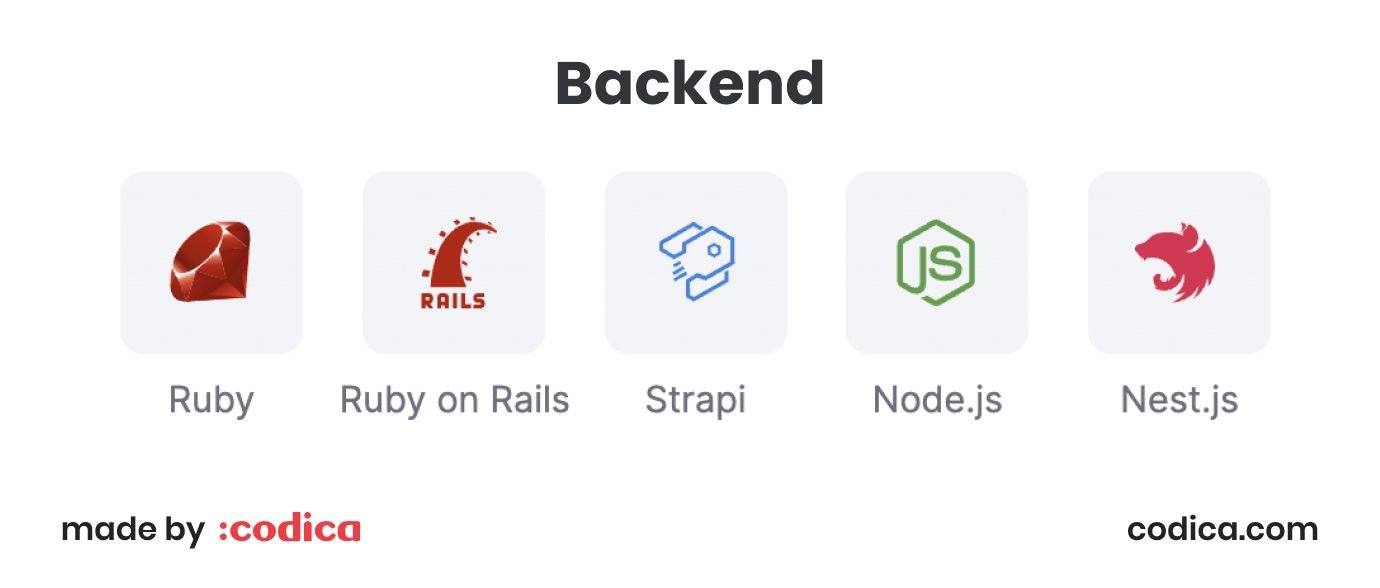
- Client-side tech stack. Frontend or client-side tools allow displaying of webpage elements to users. In this matter, we use HTML5, CSS3, JS, Ruby on Rails, React, and Vue.js.

- Tools. Integrations and tools simplify development, communication, DevOps, and other processes. At Codica, we prefer using AWS S3, GitLab, GitHub, Slack, and Digital Ocean.
UX/UI design
The design of your marketplace's minimum viable product must clearly show all its functionality. Therefore, UI/UX design services significantly impact your MVP and its further success. This impact and its help can be outlined in several ways.
At Codica, we are experts in delivering designs and adapting them to the platform, client, and niche-specific demands. Let’s take PlanMyKids as an example.
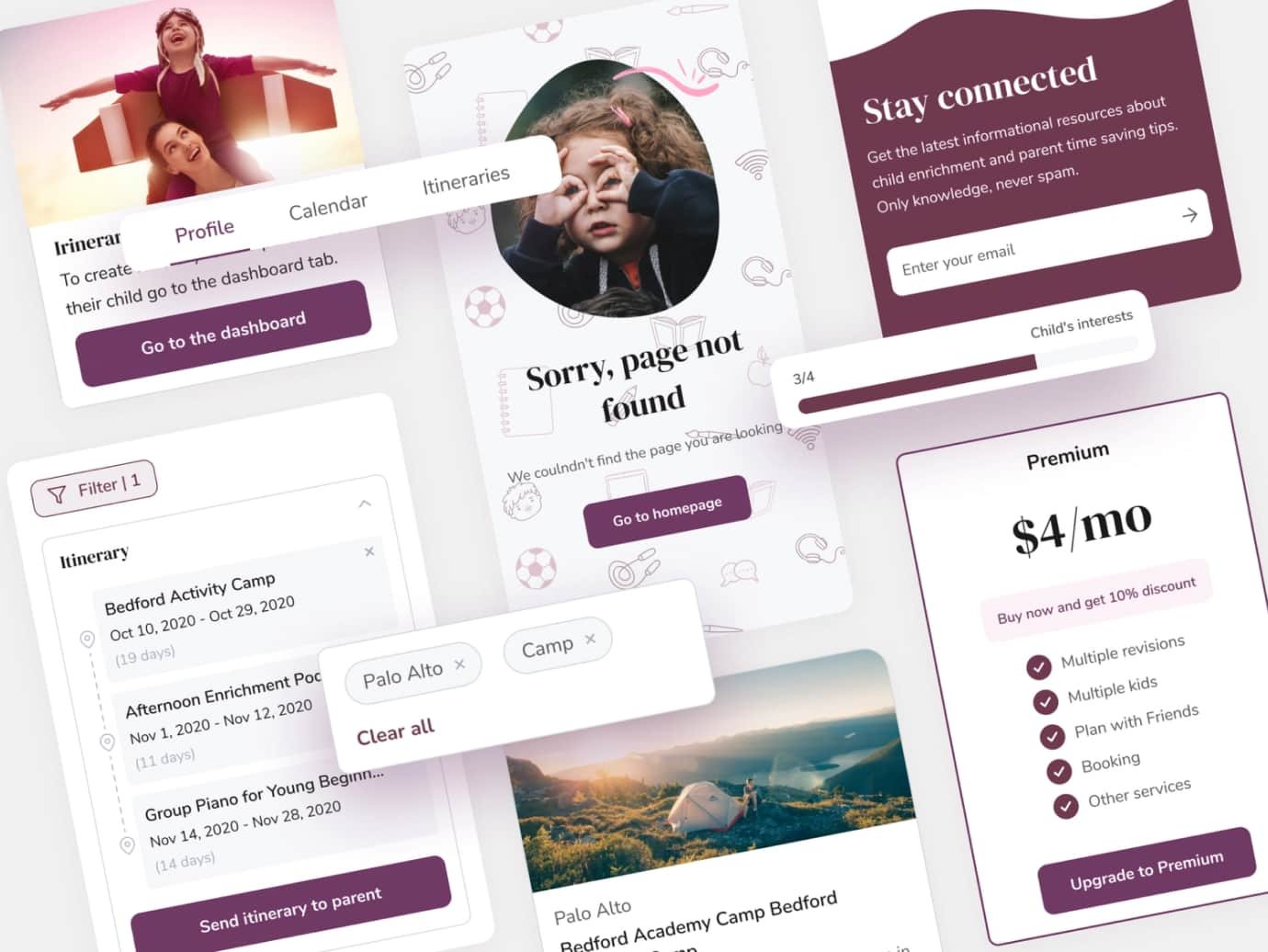
This online service marketplace allows people to browse through available activities and book them for their kids. Moreover, its user-friendly design and user experience make the project seamless and understandable at a glance.
The marketplace is packed with convenient features. For instance, PlanMyKids has an advanced booking system, adaptable web forms, and a calendar. In fact, all these features would be way more difficult to implement without testing them with MVP web development.
As a result, we managed to deliver a fast, robust, and highly performant marketplace. Here’s an overview of how it works.
Development of the online marketplace MVP
At this point, your marketplace's minimum viable product is being built. It’s a vast step, with numerous milestones for developers to overcome. Normally, the software development services can be divided into several parts, each managed simultaneously by a variety of specialists.
Frontend development is a part of the development process that involves coding the user interface design using web development technologies we picked earlier on during the product discovery. This step ensures that the marketplace MVP has a consistent and responsive design that is optimized for different devices and screen sizes. Moreover, frontend development also includes building logic, data processing, cookies, and everything in between. Simply put, frontend development is all about building everything except the server side.
On the other hand, the backend development involves coding the marketplace MVP's server-side logic. This includes developing the database architecture, creating APIs, and integrating third-party services such as payment processing and messaging.
Lastly, security is another critical consideration in developing a marketplace MVP. Developers need to implement security measures to protect user data and ensure that the platform is secure against hacking attempts and other threats.
Testing
It is a critical part of developing a marketplace MVP to ensure it is functional, user-friendly, and meets the needs of the target audience. The QA testing services can be quite vast, involving absolutely different methods to ensure all functional parts work as intended.
Different types of testing include unit testing, integration testing, functional testing, performance testing, and user acceptance testing. Note that this process should be ongoing throughout the development phase to continuously refine and optimize the marketplace MVP.
Further reading: MVP Testing: Techniques, Strategies, and Plan
Customers feedback
Specifically to MVP, collecting user reviews and feedback is crucial as it can significantly boost your marketplace. Besides, enough feedback about your MVP can reveal ways for potential growth and development. With proper feedback handling, you can:
- Prioritize features. Customer feedback can also help you prioritize the most important features and functionalities for your target audience. This can help you focus on building the features that will significantly impact user engagement and satisfaction.
- Validate assumptions. Gathering feedback can help you validate assumptions about your target audience and ensure you build a platform that meets their needs and expectations. This can help you avoid building features your target audience doesn't want or need.
- Identify pain points. Gather feedback from customers to identify pain points and areas of the platform that need improvement. For example, if customers are having trouble finding goods, focus on improving the search system and user experience.
Support & maintenance
After the MVP has been released, there’s always room for maintenance and ongoing support. Accordingly, you can improve your MVP once it’s published in several ways.
In this matter, technical support is essential. It implies assisting users once they are stuck, answering questions, and addressing concerns.
Hotfixes and bug fixes are other vital aspects. As with any software platform, bugs and other issues can arise over time. It's essential to have a process for quickly identifying and fixing these issues to minimize disruption to users.
It is also vital to update your platform regularly. A marketplace should continue to evolve and improve over time to meet the changing needs of its users. This can include adding new features and functionalities, as well as making enhancements to existing ones.
Further marketplace MVP development
After launching your marketplace MVP, prioritize user feedback for continual improvement. For instance, utilize the Build-Measure-Learn approach from the lean startup methodology, which can help you build, analyze, collect feedback, and iterate. Moreover, you can always enhance your marketplace even further.
Mobile app. With the increasing number of mobile users, create a user-friendly mobile app to expand your reach and boost conversions. In this regard, our mobile app development services can help.
Read also: Native vs Cross-Platform App Development: The Right Way for Your Business
Comparison feature. Allow users to compare products directly on your platform, enhancing their experience and saving time. It is simple to implement, yet it saves a lot of time for users. This feature is practically a must in most modern marketplaces. Here’s how it looks at Amazon.
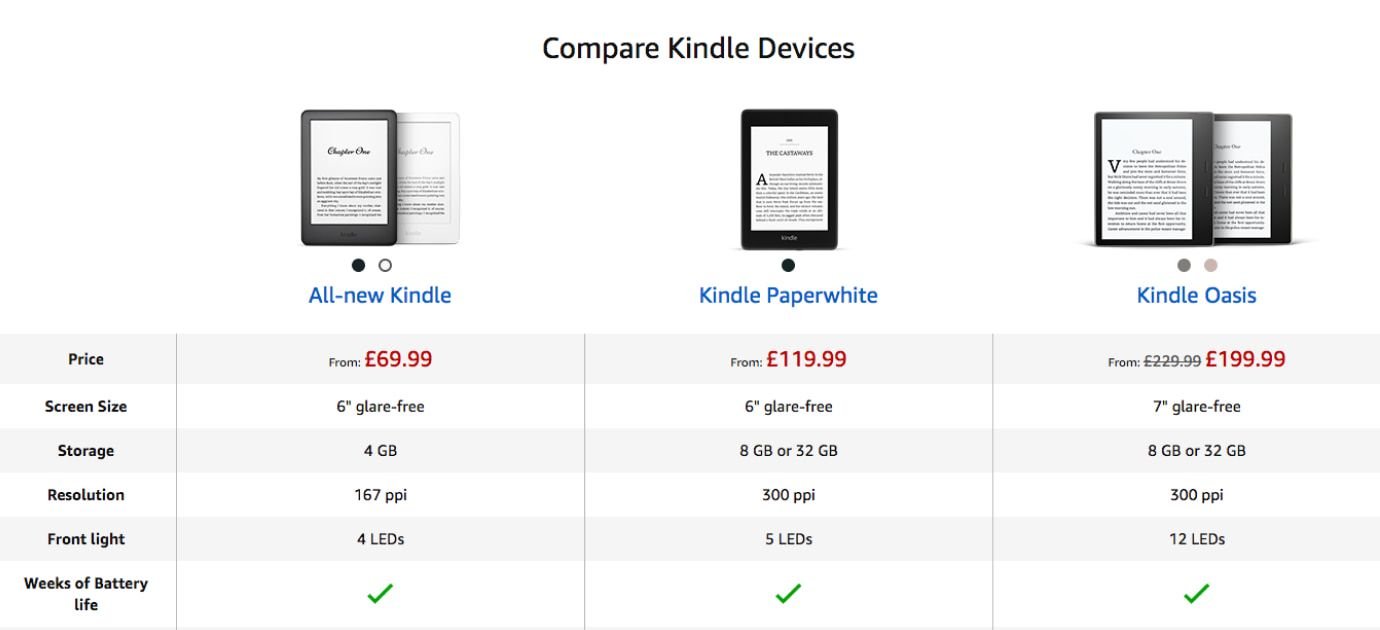
Social network sharing. This feature massively promotes your marketplace business within the users’ social networks. Social network sharing is important for a marketplace MVP because it increases visibility, enables viral growth, encourages user-generated content, facilitates referral programs, and provides valuable user feedback and insights. It helps create awareness, drive user acquisition, foster engagement, and gather feedback.
Wish list. It gives users an opportunity to have all the products they want in one location. Thus, you can send them notifications with discounts on the products from the wishlist and further help them make an easy purchase.
Localization. Adapt your marketplace for global users by offering language, currency, and regional options.
Key metrics for a marketplace MVP
To measure the effectiveness of your MVP and track its progress, it's essential to monitor key metrics. These metrics provide valuable insights into user engagement, platform performance, and overall business health. Here are the key metrics you should focus on regarding marketplace marketing.

Bounce rate. This metric measures the percentage of visitors who navigate away from your site after viewing only one page. A high bounce rate may indicate issues with user experience or content relevance.
Time on site. The average time users spend on your marketplace indicates their level of interest and engagement. Longer average time on site generally correlates with higher user satisfaction and retention.
MAU (monthly active users). It measures the number of unique users who visit your marketplace within a month. Tracking MAU helps assess the overall growth and popularity of your platform over time.
Feedback. Solicit user feedback through surveys, ratings, reviews, and direct communication channels. Pay attention to positive feedback and constructive criticism to continuously improve your marketplace.
Transactions. Track the number and value of transactions conducted on your platform. Increasing transaction volume indicates growing user adoption and marketplace activity.
Supplier and buyer liquidity. Assess the availability of suppliers (sellers) and buyers on your marketplace. Balancing supply and demand is crucial for a healthy marketplace ecosystem.
Vendor-to-buyer ratio. Analyze the ratio of sellers to buyers on your platform. A balanced ratio ensures a diverse selection of products/services and enhances the overall user experience.
Repeat purchase ratio. Measure the percentage of users who make multiple purchases on your marketplace. A high repeat purchase ratio indicates strong customer loyalty and retention.
Cost of development of a marketplace MVP
The final marketplace development cost depends on several factors, including the complexity of the platform, technology stack, team size and expertise, third-party integrations, design and user experience, and testing and quality assurance.
These factors can vary widely and impact the overall cost of the project. It's important to carefully consider each of these factors when estimating the cost of building a marketplace MVP. At Codica, though, we can provide pretty accurate costs, conveniently describing them in a table. Let’s take a look.
| Time and cost of MVP development, by steps | ||
| Development phase | Time, hours | Cost, $50/hour |
| Product discovery | 80 | 4 000 |
| UX/UI design | 96 | 4 800 |
| Development | 720 | 36 000 |
| QA & DevOps | 160 | 8 000 |
| Project management | 112 | 5 600 |
| Scaling | By request | By request |
| Total | 1168 | 58 400 |
Examples of marketplace MVPs
Even worldwide known brands started with a minimum viable product. Thus, to provide more understanding and supplement the theory we discussed, let’s take a brief look at the examples of MVPs.
Amazon
Nowadays, it is pretty hard to find a person who does not know about such a multi-vendor marketplace development juggernaut as Amazon. However, few know that in 1994, the company began selling low-cost books with the most uncomplicated designs. However, they had to develop marketplace MVP to see where to grow and how to extend the platform. Here’s what it looked like.

It was an extremely successful MVP as the books are easy-to-sell and easy-to-ship goods that do not require any customer expenses. Step by step, the marketplace started expanding the product categories. This way, they boosted the conversion rate and became the largest ecommerce marketplace platform.
Airbnb
The Airbnb website initially started to earn some money for rent payments. However, the platform has become a major lodging rental marketplace competing with Booking.com.
The marketplace software MVP version, in essence, was the most straightforward website. It included the only accommodation option published by the platform creators. After a while, their idea was successfully validated. People found an interest in staying in someone’s home instead of picking a hotel with a complex sign-up procedure.
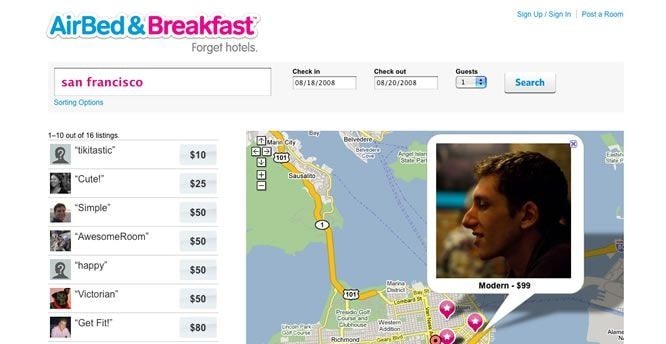
Zappos
The US-based footwear marketplace Zappos couldn’t have become so popular without the MVP. It provided enough time and space to build the platform and master it to perfection. Today, it generates nearly $1 billion annually, thanks to the foundation laid with minimum viable product development.

Benefits of partnership with Codica team
At Codica, we professionally develop marketplace MVP solutions for clients in various niches and with different functionality. We have solid experience handling everything software development-related, from small startups to enterprise-level businesses.
We always offer our customers to try MVP development services first. This way, they get initial feedback from users, present their app to stakeholders, and save custom marketplace software development costs. Also, with the help of an Agile approach, customers can make changes at any stage of the development process.
Solid expertise in building marketplace MVPs
Since 2015, the Codica team has helped numerous startups build successful and profitable Minimum Viable Products. Specifically, we have delivered 45+ solutions, 20+ of which are marketplaces. They have succeeded in e-commerce, finance, automotive, accommodation rental, travel, and insurance domains.
Strong programming experience and technical expertise
The Codica team includes 60+ technical experts. We use the most up-to-date programming tools. It allows us to build scalable, maintainable, and high-performance solutions for customers.
Our technical specialists combine their experience with the best practices to build a marketplace software MVP. This way, it meets clients’ business requirements and caters to end-users needs.
Speaking of the proficiency, multi-vendor vehicle online marketplace is another fitting example of our work. Building a big solution, both our client and us knew that MVP is essential in such project. Hence, we delivered it in short time frame and within budget. It helped our client to attract investment and make the platform thrive.

As a result, now it’s a full-scale marketplace allowing people to sell and buy a wide range of vehicles. Apart from the MVP, it has a solid progressive web app, a convenient UI/UX design both designed to attract not only desktop but also mobile users.
Lastly, it has all the features an edge-cutting marketplace must have. For example, advanced search system, communication, and even ad creation functionalities.
Project management approach
At Codica, we apply an agile methodology, which is extremely helpful in custom software development. It helps us choose the best option for the early delivery of a product. Following the methodology, we break down our work process into sprints, allowing us to deliver small parts of the product gradually. In terms of building marketplace MVPs, we provide clients with factional iterations. They help customers see results during the first stages.
So, we deliver product functionality step by step, test early, and make our solutions work from the start. Additionally, we constantly meet with our clients, sharing updates or bottlenecks. This way, both our clients and us can figure out the direction to move and priorities.
Excellent communication and timely reporting
Good communication is the key to project success. It influences the understanding of the project, the accuracy of deadlines, and the final product quality. For these reasons, we have built an efficient and transparent communication process. It allows our clients to see results at each development stage and monitor their progress.
Usually, we use Slack, our time-tracking software Timebot, and Jira to communicate with our teams and customers. With the help of these tools, we have created a solid development process and provided clients with timely reports on the work done. This way, customers always stay up-to-date with the project's progress and get high-quality product delivery.
At the same time, we are flexible in terms of working tools and are more than willing to use any other tools that our clients prefer.
Final words
Marketplace web development is a tough hill to climb, which takes a large amount of time and effort to succeed. The more efficient way is to know how to build a marketplace MVP version that validates and verifies your ideas in the early days. This way, you collect initial feedback from potential users and investors. As a result, you can generate a client base early and further improve the product.
At Codica, we have built multiple complex and unique marketplace MVPs, and we will gladly help to create yours. Check our ready works or contact us to discuss your project.

